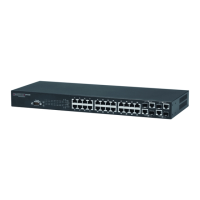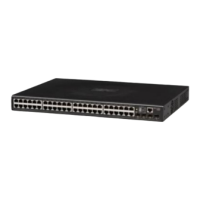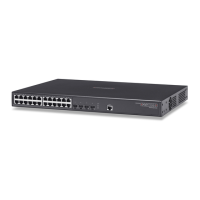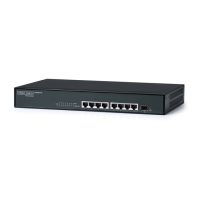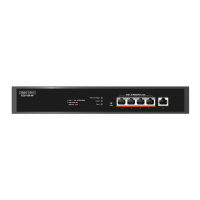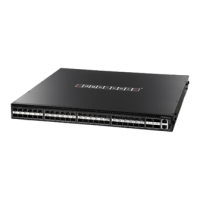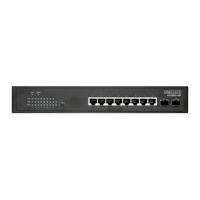C
HAPTER
40
| CFM Commands
– 962 –
Basic Configuration Steps for CFM
1. Configure the maintenance domains with the ethernet cfm domain
command.
2. Configure the maintenance associations with the ma index name vlan
command.
3. Configure the local maintenance end points (MEPs) which will serve as
the domain service access points for the specified maintenance
association using the ethernet cfm mep command.
4. Enter a static list of MEPs assigned to other devices within the same
maintenance association using the mep crosscheck mpid command.
This allows CFM to automatically verify the functionality of these
remote end points by cross-checking the static list configured on this
device against information learned through continuity check messages.
5. Enable CFM globally on the switch with the ethernet cfm enable
command.
6. Enable CFM on the local MEPs with the ethernet cfm port-enable
command.
7. Enable continuity check operations with the ethernet cfm cc enable
command.
8. Enable cross-check operations with the ethernet cfm mep crosscheck
command.
Other configuration changes may be required for your particular
environment, such as adjusting the interval at which continuity check
Loopback Operations
ethernet cfm loopback Sends CFM loopback messages to a MAC address for a
MEP or MIP
PE
Fault Generator Operations
mep fault-notify lowest-
priority
Sets the lowest priority defect that is allowed to
generate a fault alarm
CFM
mep fault-notify alarm-
time
Sets
the time a defect must exist before a fault alarm
is issued
CFM
mep fault-notify reset-
time
Configures the time after a fault alarm has been
issued, and no defect exists, before another fault
alarm can be issued
CFM
show ethernet cfm fault-
notify-generator
Displays configuration settings for the fault notification
generator
PE
Delay Measure Operations
ethernet cfm delay-
measure two-way
Sends periodic delay-measure requests to a specified
MEP within a maintenance association
PE
Table 137: CFM Commands (Continued)
Command Function Mode

